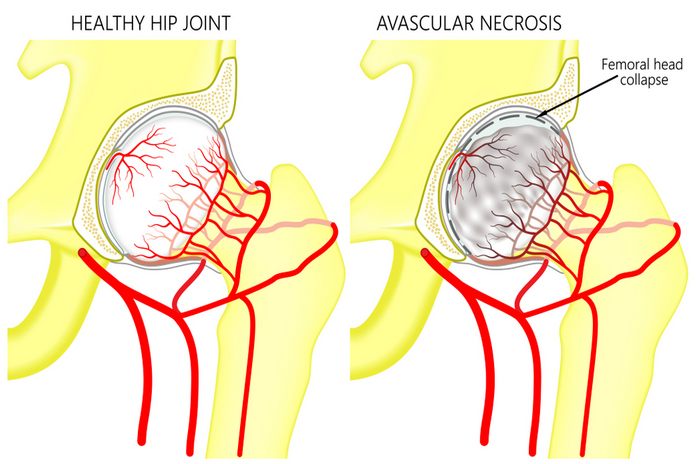Hip Osteonecrosis

Osteonecrosis means destruction of the bone tissue by a lack of nutrients and oxygen. It is also known as avascular necrosis or ischemic necrosis, which denotes the vascular nature of the disease.
The bones are alive, and there are many cells in the bones that require constant blood flow. Osteocytes and the bone marrow are affected and die when they don’t receive adequate blood flow. After the blood flow is reestablished, the dead tissue can be resorbed and replaced with new tissue, but this new tissue is weaker and prone to fractures.
Hip osteonecrosis can happen in at least two ways:
- By traumatic events that compromise the blood flow to the articulation. This is much more common in children and adolescents because their bone tissue is still in its growing stage, and auxiliary blood vessels are still not formed to compensate.
- By a systemic problem, which is often triggered by an outside substance such as alcohol or corticosteroids. They can reduce the blood flow to the articulation and cause this problem. Other causes include chronic inflammatory disease and autoimmune disorders.
Some patients with osteonecrosis may not initially have symptoms at all. But 56% of them will start having symptoms at some point of the disease, and hip pain is the most common.
